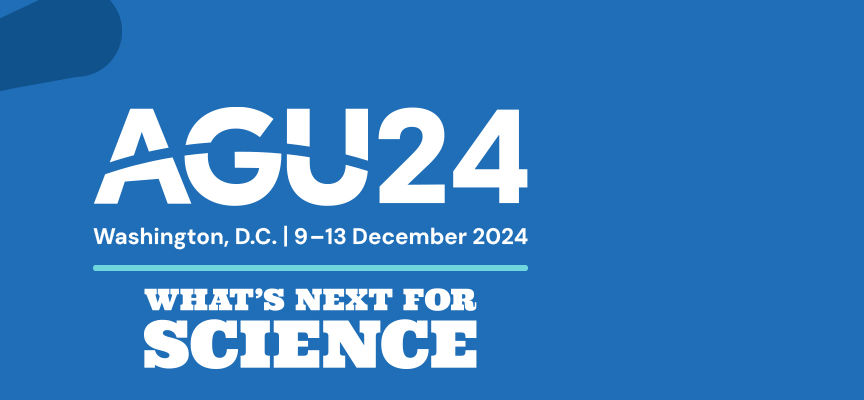News

January 6, 2025
Wildfires accompanied past periods of abrupt climate change
During the last glacial period, when large swaths of the North American continent were covered in ice, rapid, repeating shifts in temperature and tropical rainfall continually altered environments around the world. A new study led by a CIRES/GML researcher finds past wildfire activity tracked the abrupt changes in climate — burning increased when rainfall decreased.December 4, 2024
GML highlights at AGU 2024 Fall Meeting
GML and CIRES researchers are presenting several talks and posters at the 2024 Fall Meeting of the American Geophysical Union and collaborating on many more.December 2, 2024
NOAA’s GOES Satellites Can Provide Quicker Detection of Large Methane Emissions
Innovative use of NOAA’s geostationary satellites (GOES) has given scientists a new way to detect large methane emissions faster and more accurately. NOAA scientists say the experimental verification of GOES methane data will lead to faster, more complete data on the location—and amount—of methane emissions and successful mitigation efforts, when there are accidental leaks.November 13, 2024
No sign of fossil fuel pollution peak as the world falls further behind climate targets
Emissions of carbon caused by fossil fuel pollution continued to grow slightly in 2023 to 36.8 billion metric tons of carbon dioxide, setting yet another new record despite increasingly urgent warnings from scientists about the need for steep and immediate decreases. NOAA provides about a quarter of all the atmospheric CO2 observations and about half of all the surface ocean CO2 observations used in the analysis.October 21, 2024
Microbes, not fossil fuels, drove methane growth between 2020–22
Microbes in the environment, not fossil fuels, have been driving the recent surge in methane emissions globally, according to a new, detailed analysis published Oct 21 in the Proceedings of the National Academy of Sciences by CU Boulder researchers and collaborators.July 23, 2024
NOAA and United Airlines partner to measure greenhouse gases, pollutants with high-tech flight instruments
NOAA and United Airlines have announced an agreement to equip a Boeing 737 with a sophisticated instrument package that will measure greenhouse gases and other pollutants during domestic flights. It’s a first step in establishing a partnership that could significantly improve monitoring of carbon dioxide, methane and other greenhouse gases, as well as improving the accuracy of weather forecasts in the United States.June 28, 2024
Understanding the basics of carbon dioxide
As atmospheric greenhouse gas levels continue to rise, it is important to understand the basics of what these gases are, how NOAA monitors them, and what they mean for our global climate. Continue reading to learn all about carbon dioxide and why it keeps making headlines.June 24, 2024
Biden-Harris Administration awards $4.9 million to advance drought monitoring and prediction in U.S. West through the Investing in America agenda
Today, the NOAA announced $4.9 million in funding for the agency’s labs and research partners to improve drought monitoring and prediction in the American West. This research combines $3.1 million in funding from NOAA’s National Integrated Drought Information System (NIDIS) program and $1.8 million from the Inflation Reduction Act to improve decision-makers’ capacity to protect life, property and ecosystems in the region from drought.June 12, 2024
Nitrous oxide emissions grew 40 percent from 1980 to 2020, accelerating climate change
Emissions of nitrous oxide, the third most important human-made greenhouse gas, rose 40 percent from 1980 to 2020, according to a new report by the Global Carbon Project. The new study, published today in the journal Earth System Science Data, finds nitrous oxide is accumulating in Earth’s atmosphere faster than at any other time in human history.June 6, 2024
During a year of extremes, carbon dioxide levels surge faster than ever
Carbon dioxide is accumulating in the atmosphere faster than ever — accelerating on a steep rise to levels far above any experienced during human existence, scientists from NOAA and the Scripps Institution of Oceanography offsite link at the University of California San Diego announced todayMay 20, 2024
The world’s benchmark climate monitoring station passes a major milestone
On May 17, 1974, staff of the new National Oceanographic and Atmospheric Administration’s Geophysical Monitoring for Climatic Change program took their first atmospheric measurements for what would become one of the most scientifically significant records of humanity’s impact on Earth’s climate.April 5, 2024
No sign of greenhouse gases increases slowing in 2023
Levels of the three most important human-caused greenhouse gases—carbon dioxide, methane, and nitrous oxide—continued their steady climb during 2023, according to NOAA scientists. While the rise in these heat-trapping gases recorded in the air samples collected by NOAA’s Global Monitoring Laboratory in 2023 was not quite as high as the record jumps observed in recent years, they were in line with the steep increases observed during the past decade.March 18, 2024
Women’s History Month 2024: What it means to me
March is National Women’s History Month, an opportunity to celebrate pioneering women in American history, while turning an eye to the contributions women are making—and will make—to society, especially in career fields historically inaccessible to women. In this video series, #WomenOfNOAA share advice they would give to their younger selves.March 18, 2024
Women’s History Month: A Conversation With Dr. Xin Lan
This article continues a series of interviews with NOAA Climate Program Office (CPO) employees and CPO-funded scientists in celebration of Women’s History Month. Dr. Xin Lan is a carbon cycle scientist with NOAA Global Monitoring Laboratory (GML) through the Cooperative Institute for Research in Environmental Sciences (CIRES) of University of Colorado Boulder.December 19, 2023
Top NOAA Research stories from 2023
Record-breaking marine heatwaves, increasing greenhouse gas concentrations, an above average hurricane season, and numerous deep sea discoveries made 2023 a busy year for NOAA Research. Let’s explore some of our top stories from this year!









.png?h=bd90e97c&itok=b353ke6f)




